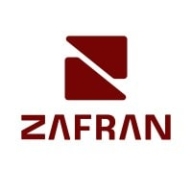


Qualys VMDR and Trend Micro Deep Security compete in the cybersecurity domain, each excelling in different areas. Qualys VMDR has a stronger focus on extensive vulnerability management, offering seamless cloud-based operations, while Trend Micro Deep Security is advantageous for its server protection and virtual patching capabilities, crucial for organizations needing robust server defense.
Features: Qualys VMDR stands out with real-time asset discovery, integration, and continuous monitoring, enhancing proactive threat detection. It's lauded for scalability, certificate management, and its prioritization mechanism. Conversely, Trend Micro Deep Security offers innovative virtual patching, centralized malware control, and integrated IDS/IPS functionality, excelling in server defense and network protection.
Room for Improvement: Users suggest Qualys VMDR enhance its reporting, cloud integration, and customization options, along with SLA tracking and customer support. For Trend Micro Deep Security, improvements are desired in multi-cloud management, compatibility with non-agent setups, enhanced network visibility, and streamlined agent deployment. Both products face concerns with pricing structures and integration challenges.
Ease of Deployment and Customer Service: Qualys VMDR is admired for its cloud deployment capabilities and ease of use, facilitating integration into existing systems; however, some users experience customer service delays. Trend Micro Deep Security provides a mature deployment process for diverse infrastructures, with generally responsive customer service, but initial setup complexity is noted by some users.
Pricing and ROI: Qualys VMDR is acknowledged as a high-value solution due to its comprehensive feature set, though its pricing is relatively high. The solution offers significant return on investment in improved security and vulnerability management. Trend Micro Deep Security is also described as costly but effective, delivering value with extensive protection features, with its pricing competitive in certain regions. Both solutions provide substantial ROI potential but serve different organizational needs and budgets.
| Product | Market Share (%) |
|---|---|
| Qualys VMDR | 6.4% |
| Wiz | 10.6% |
| Tenable Nessus | 7.4% |
| Other | 75.6% |
| Product | Market Share (%) |
|---|---|
| Trend Micro Deep Security | 43.2% |
| Sophos Virtualization Security | 16.9% |
| Entrust CloudControl | 15.3% |
| Other | 24.599999999999994% |



| Company Size | Count |
|---|---|
| Small Business | 20 |
| Midsize Enterprise | 12 |
| Large Enterprise | 69 |
| Company Size | Count |
|---|---|
| Small Business | 36 |
| Midsize Enterprise | 24 |
| Large Enterprise | 42 |
Zafran Security integrates with existing security tools to identify and mitigate vulnerabilities effectively, proving that most critical vulnerabilities are not exploitable, optimizing threat management.
Zafran Security introduces an innovative operating model for managing security threats and vulnerabilities. By leveraging the threat exposure management platform, it pinpoints and prioritizes exploitable vulnerabilities, reducing risk through immediate remediation. This platform enhances your hybrid cloud security by normalizing vulnerability signals and integrating specific IT context data, such as CVE runtime presence and internet asset reachability, into its analysis. No longer reliant on patch windows, Zafran Security allows you to manage risks actively.
What are the key features of Zafran Security?
What benefits can users expect from Zafran Security?
In industries where security is paramount, such as finance and healthcare, Zafran Security provides invaluable protection by ensuring that only exploitable vulnerabilities are addressed. It allows entities to maintain robust security measures while allocating resources efficiently, fitting seamlessly into existing security strategies.
Vulnerability Management, Detection, and Response (VMDR) is a cornerstone product of the Qualys TruRisk Platform and a global leader in the enterprise-grade vulnerability management (VM) vendor space. With VMDR, enterprises are empowered with visibility and insight into cyber risk exposure - making it easy to prioritize vulnerabilities, assets, or groups of assets based on business risk. Security teams can take action to mitigate risk, helping the business measure their actual risk exposure over time.
Qualys VMDR offers an all-inclusive risk-based vulnerability management solution to prioritize vulnerabilities and assets based on risk and business criticality. VMDR seamlessly integrates with configuration management databases (CMDB), Qualys Patch Management, Custom Assessment and Remediation (CAR), Qualys TotalCloud and other Qualys and non-Qualys solutions to facilitate vulnerability detection and remediation across the entire enterprise.
With VMDR, users are empowered with actionable risk insights that translate vulnerabilities and exploits into optimized remediation actions based on business impact. Qualys customers can now aggregate and orchestrate data from the Qualys Threat Library, 25+ threat intelligence feeds, and third-party security and IT solutions, empowering organizations to measure, communicate, and eliminate risk across on-premises, hybrid, and cloud environments.
Trend Micro Deep Security is a comprehensive solution for endpoint security and server protection, which prevents ransomware attacks and unauthorized access attempts. Its valuable features include tracing back attacks, antivirus protection, endpoint detection and response, firewall-based solution, threat detection, predictive machine learning and AI monitoring, VPM, virtualization, and sandboxing.
The solution is easy to use, scalable, stable, and reliable, with good technical support. It has helped organizations perform well against malware and vulnerabilities, provide patching from the Protection Cloud, and improve their security posture.
Trend Micro Deep Security Features
Trend Micro Deep Security has many valuable key features. Some of the most useful ones include:
Reviews from Real Users
Trend Micro Deep Security stands out among its competitors for a number of reasons. Two major ones are its robust data and loss prevention feature and its patch management, which saves users money. PeerSpot users take note of the advantages of these features in their reviews:
One PeerSpot reviewer, a Senior Security Advisor at a healthcare company, writes, “DLP, Data Loss Prevention, and the complexity of how we manage the console and how this client, or this tool, will notify us when there is something going wrong within the server and endpoint, is good.”
Nadeem S., CEO at Haniya Technologies, notes of the solution, “Patch management is most valuable. The major selling point of Deep Security is that it is based on the cloud. Deep Security is for the servers and databases of data centers, and generally, for patch management, you have to shut down the machines, and then you have to restart them. So, they need shutdown time, which is a cost.”
We monitor all Vulnerability Management reviews to prevent fraudulent reviews and keep review quality high. We do not post reviews by company employees or direct competitors. We validate each review for authenticity via cross-reference with LinkedIn, and personal follow-up with the reviewer when necessary.